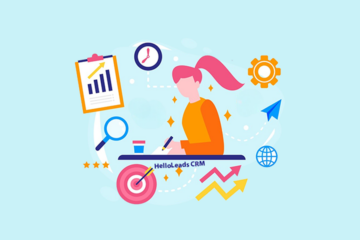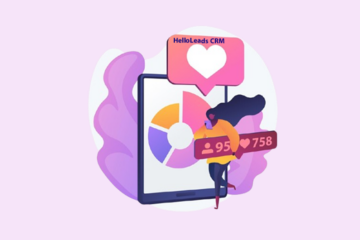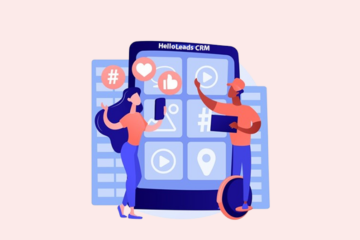
“Paid ads bring you traffic, but SEO builds your brand.” – Neil Patel
Should you invest in paid ads or SEO for lead generation? The truth is, there’s no one-size-fits-all answer. Both strategies have their merits, and the best approach often depends on your specific business goals, industry, target audience, and budget. Paid ads provide immediate visibility by placing advertisements prominently on platforms like search engines (such as Google Ads), social media (such as Facebook Ads), and other networks. This immediacy can swiftly direct traffic to your website, targeting specific demographics, interests, and behaviors with precision. Meanwhile, SEO focuses on optimizing your website to rank higher in organic search engine results over time. This strategy builds credibility and trust among users, drawing sustained organic traffic and reducing long-term acquisition costs.
Understanding the strengths and nuances of paid ads and SEO is crucial for crafting an effective lead generation strategy. Let’s explore each method to uncover their benefits, costs, and how they can complement each other to maximize results in your digital marketing efforts.
Understanding Paid Advertising (Paid Ads)
“The beauty of paid ads is the ability to target the right customer at the right time.” – Larry Kim
Think of paid ads as billboards on the internet. You pay to show your ad to people searching for products or services like yours. This is often called Pay-Per-Click (PPC) advertising. Paid advertising involves paying for ad space on various platforms like search engines (such Google Ads), social media (such as Facebook Ads), or display networks. Here are some key points about paid ads:
Immediate visibility: With paid ads, your content appears prominently in search engine results or social media feeds almost instantly after launching the campaign. This quick visibility can drive traffic to your website right away.
Targeted reach: Paid ads allow precise targeting based on demographics, interests, behavior, and location. This targeted approach ensures that your ads reach potential customers who are likely to be interested in your products or services.
Control and flexibility: Marketers have full control over ad content, budget, and duration of campaigns. Real-time adjustments can be made in to optimize performance based on the data and insights provided by the advertising platform.
Cost considerations: While effective, paid ads can become costly, especially for highly competitive keywords or audiences. The cost-per-click (CPC) model means you pay for each click on your ad, regardless of whether it converts into a lead.

Cons:
- Continuous costs: Unlike SEO, paid ads require ongoing budget allocation.
- Limited lifespan: Once you stop paying for ads, the traffic and leads usually cease as well.
- Potential ad fatigue: Overexposure to your ads can lead to decreased click-through rates.
The Power of Search Engine Optimization (SEO)
“SEO is not about optimizing for search, it’s about optimizing for the user.” – Brian Dean
SEO is like building a strong reputation online. You make your website more accessible for search engines like Google to understand, so it appears higher in search results for relevant keywords. SEO focuses on optimizing your website to rank higher in organic (non-paid) search engine results. Here’s why SEO is crucial for lead generation:
Long-term benefits: Unlike paid ads, SEO efforts can have long-lasting effects. Once your website achieves high rankings for relevant keywords, you can attract consistent organic traffic over time without ongoing investment in ads.
Credibility and trust: High organic rankings are often perceived as an endorsement by search engines, enhancing trust and credibility with potential customers. Users tend to trust organic search results more than paid advertisements.
Cost efficiency: While SEO requires upfront investment in content creation, optimization, and possibly technical improvements, the ongoing cost per visitor acquired through organic search is typically lower than through paid ads.
Content focus: SEO encourages the creation of high-quality, valuable content that both educates and engages your target audience. This content not only attracts visitors but also guides them through the sales funnel, potentially increasing lead quality.
Cons:
- Time-consuming: SEO takes time to produce results.
- Competitive: Ranking for highly competitive keywords can be challenging.
- Algorithm updates: Changes to search engine algorithms can affect your rankings.

The Best of Both Worlds
Many businesses find success by combining paid ads and SEO. Here’s how:
Use paid ads to complement SEO efforts: Target specific keywords and demographics with paid ads while developing on long-term SEO strategies.
Utilize paid ads for testing: Experiment with different ad copy, landing pages, and targeting options to enhance your SEO efforts.
Complementary strategies: Many successful marketing campaigns integrate both paid ads and SEO. Paid ads can deliver quick wins while SEO efforts build sustainable organic traffic over time.
Build brand awareness: Use paid ads to expand a wider audience and increase brand visibility, which can positively impact your SEO.
Which is right for you?
To determine the best approach for your business, consider the following factors:
Your budget: If you have a substantial budget and need immediate results, paid ads might be more suitable. On the other hand, if your budget is limited and you’re looking for sustainable growth, investing in SEO can provide better long-term value.
Your timeline: If you need immediate results and have the budget, paid ads can quickly drive traffic and generate leads. However, for ongoing lead generation and lower ongoing costs, SEO is crucial.
Your target audience: Understand your ideal customer and where they are in the buying journey. If they tend to trust organic results more, focusing on SEO can be beneficial. Conversely, if they respond well to targeted ads, paid advertising can yield better results.
Your industry competitiveness: The level of competition in your industry can impact the effectiveness of both paid ads and SEO. In highly competitive industries, paid ads can be costly, and SEO can take longer due to the high level of competition. A combined approach, leveraging both strategies, might be the most effective.
Ultimately, the decision between paid ads and SEO depends on your specific business needs, goals, and resources. By understanding the strengths and weaknesses of each approach, you can develop a comprehensive digital marketing plan that achieves results.
Share this blog :










